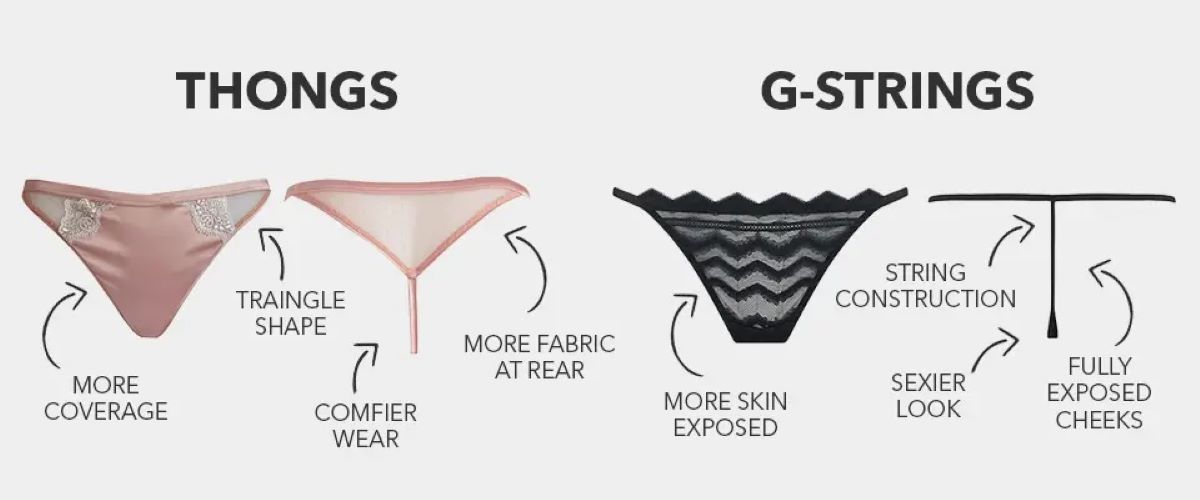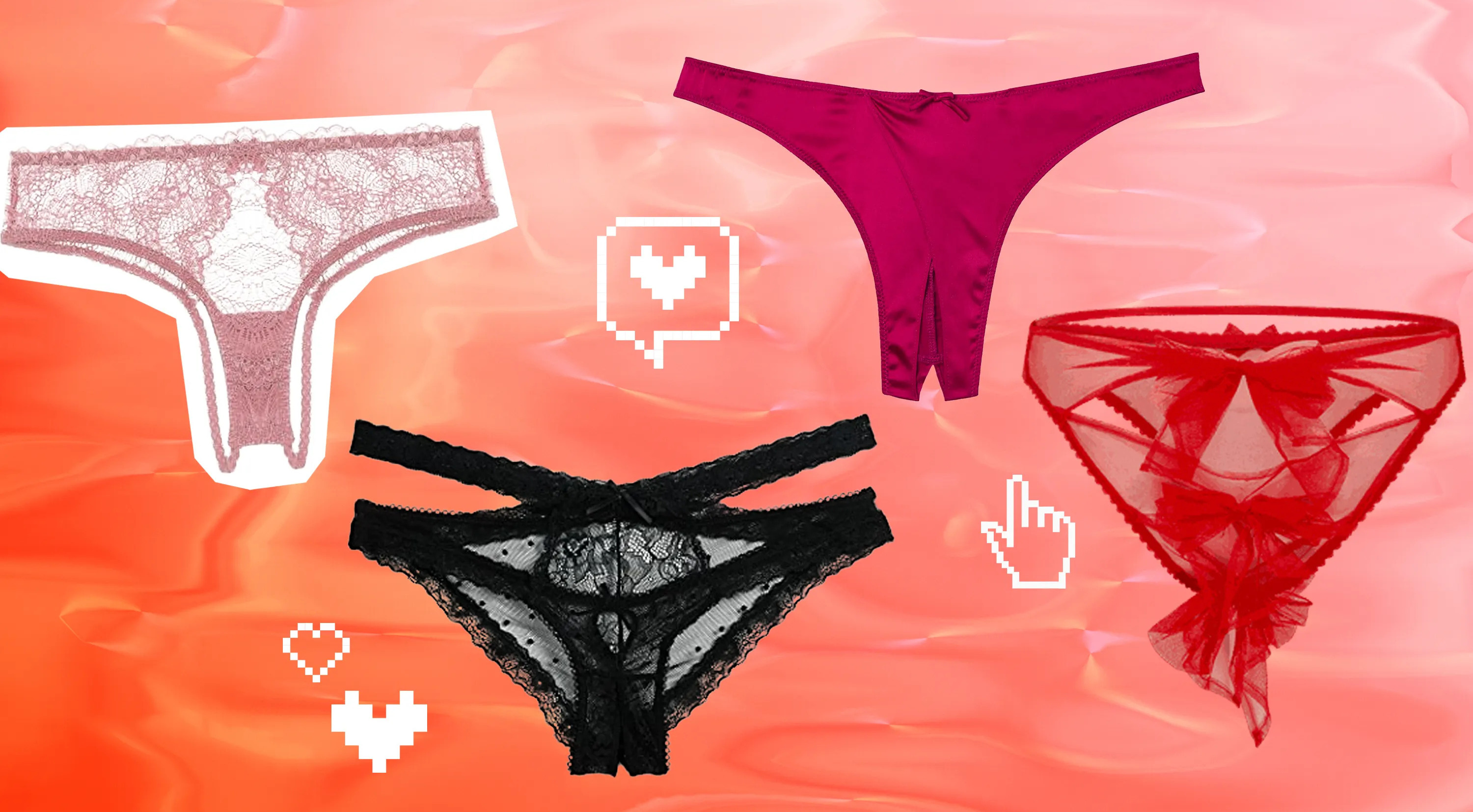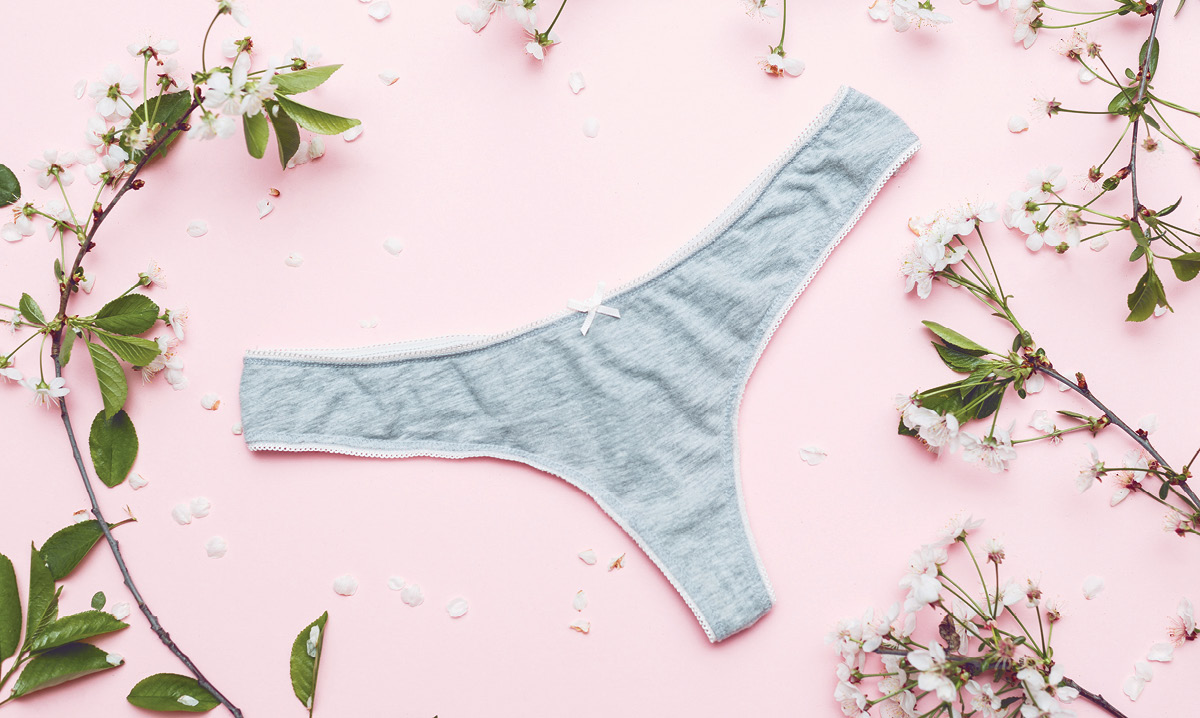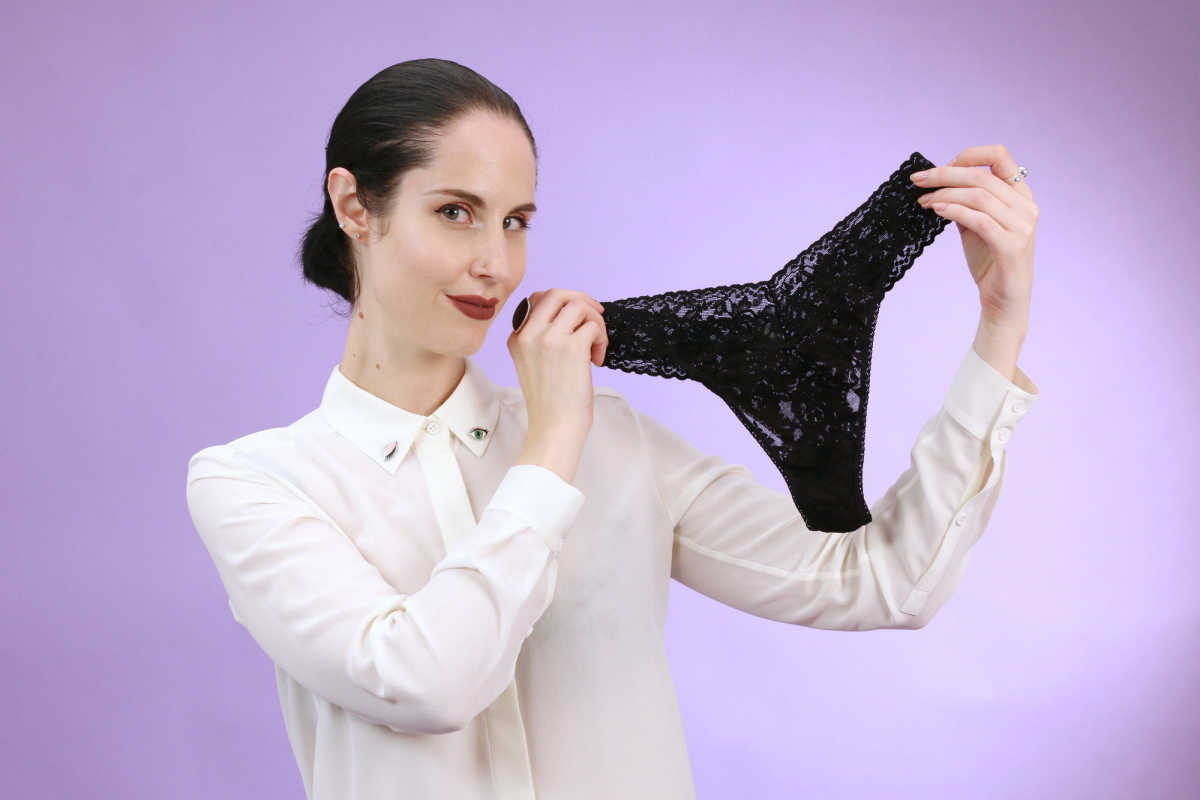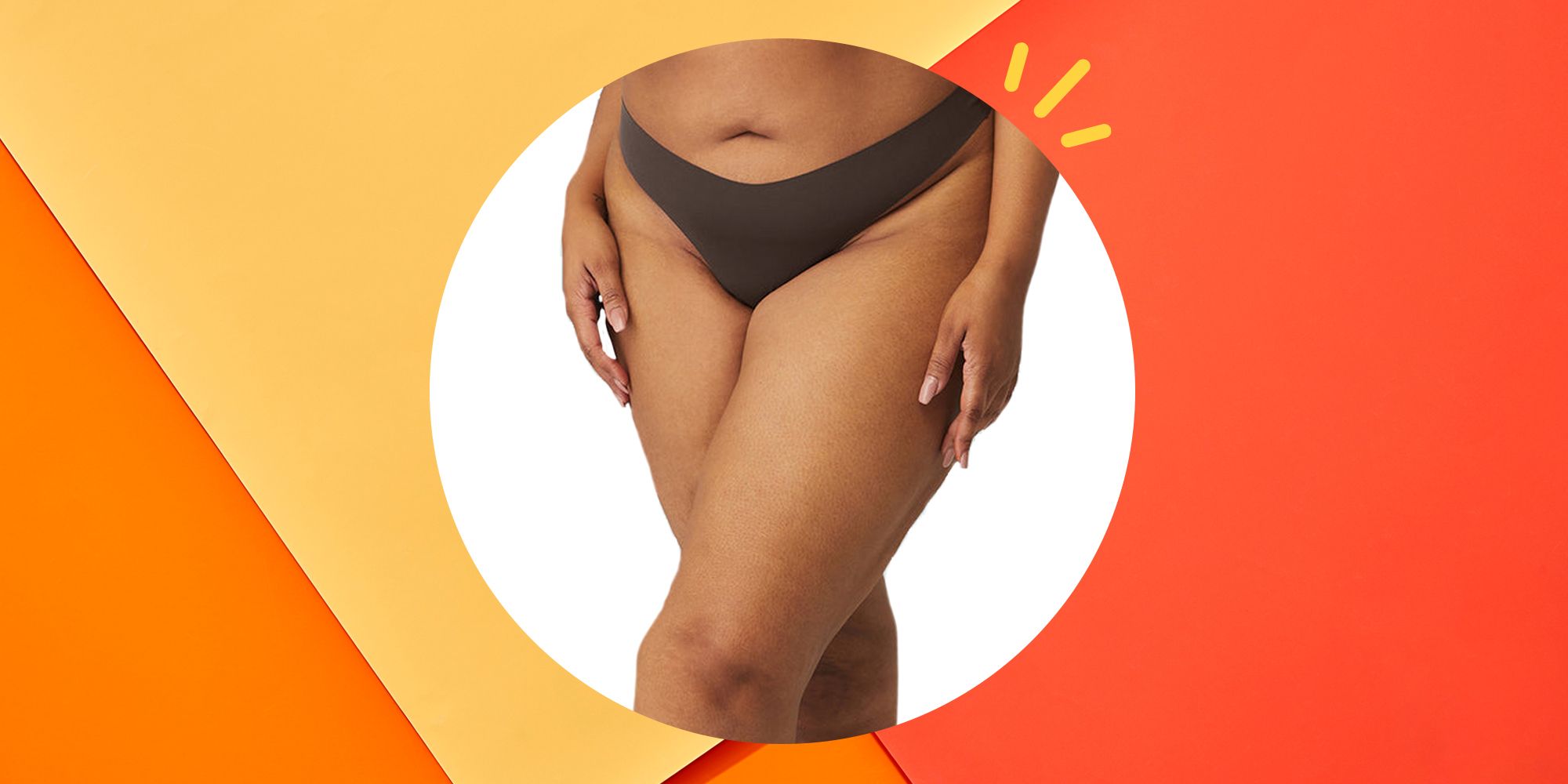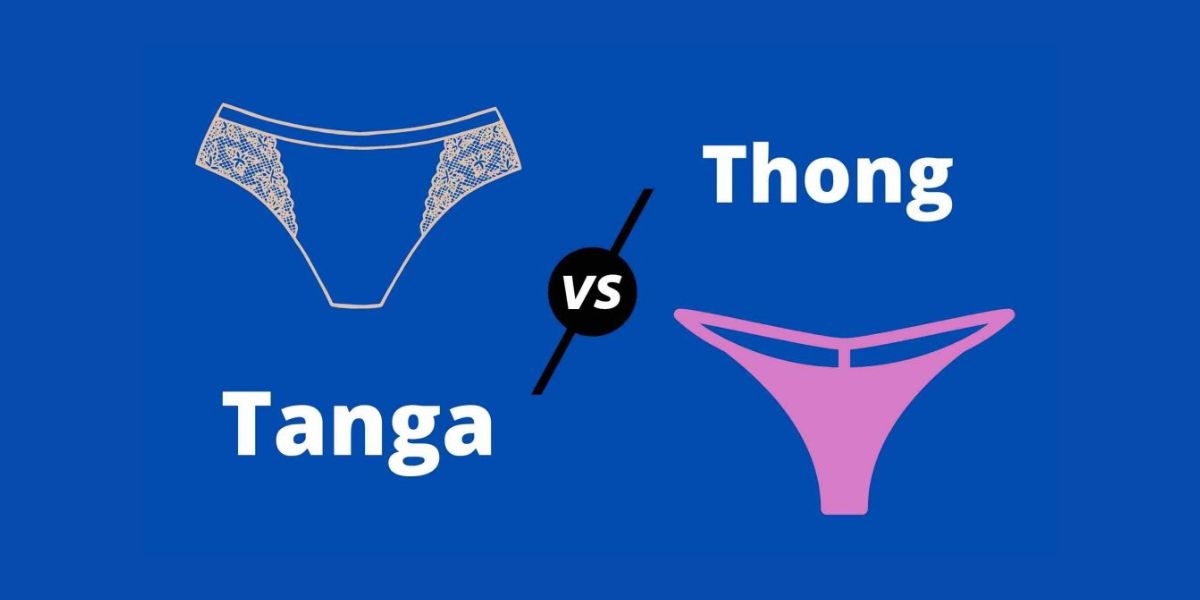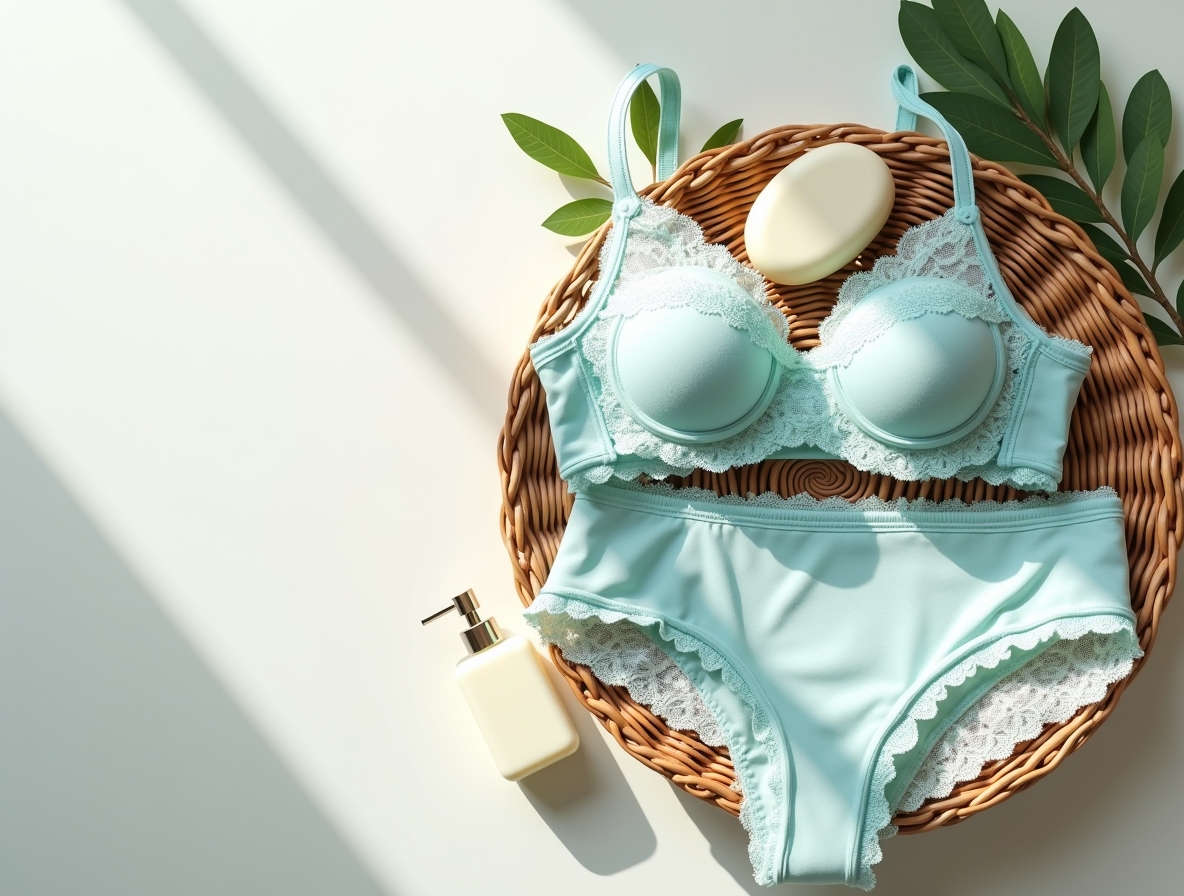Home>Women's Underwear>Thongs>What Is A Thong
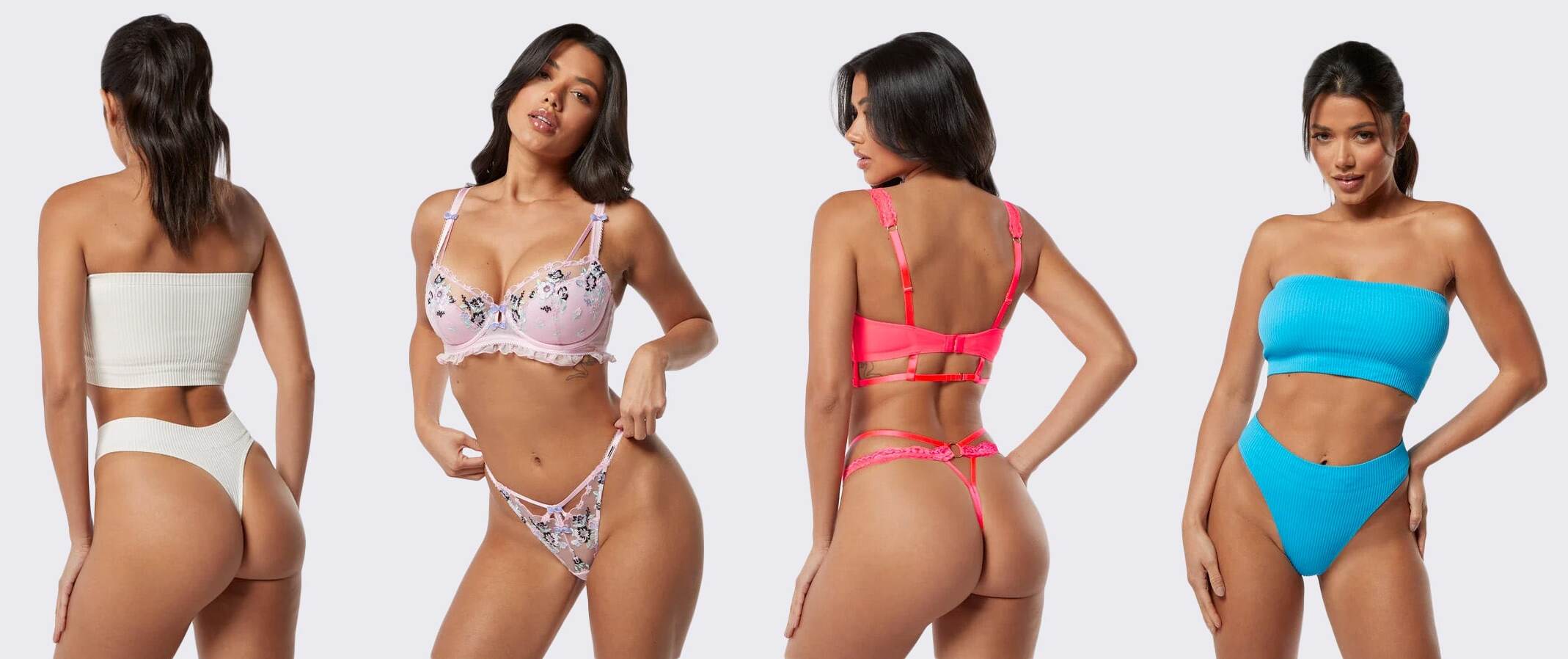

Thongs
What Is A Thong
Modified: August 2, 2023
Discover the ultimate comfort and style with our collection of Thongs. Shop now for a wide range of trendy and affordable options.
(Many of the links in this article redirect to a specific reviewed product. Your purchase of these products through affiliate links helps to generate commission for Under-tec.com, at no extra cost. Learn more)
Table of Contents
Introduction
Welcome to the world of thongs, where comfort meets style! Whether you’re a fashion enthusiast, an active individual, or someone who simply prefers minimalistic undergarments, thongs have become a popular choice in recent years. These skimpy yet sleek pieces of lingerie have captured the attention and curiosity of people all around the globe.
A thong is a type of undergarment that is known for its unique design. Unlike traditional panties, thongs feature a narrow strip of fabric that provides coverage in the front while leaving the buttocks exposed. This daring design has gained popularity for various reasons, from minimizing panty lines to adding a touch of sensuality to one’s wardrobe.
Thongs have a fascinating history that dates back centuries. Originally worn by ancient Egyptians, Greeks, and Romans, these primitive versions of thongs were primarily made of leather or cloth. Over time, the design evolved to include thinner, more delicate materials and intricate lace patterns.
Nowadays, you can find various types of thongs to suit different preferences and occasions. The G-string is the most daring style, featuring the bare minimum coverage in the back. There are also T-back thongs, which have a small triangular piece of fabric that connects the front and back. Additionally, you’ll come across V-string thongs that have a narrow V-shaped back and seamless thongs perfect for avoiding visible panty lines under tight-fitting clothing.
Wearing a thong requires a bit of confidence and care. It’s important to choose the right size and ensure a proper fit to maximize comfort. Some individuals find thongs to be incredibly comfortable, thanks to the freedom of movement they provide. However, others may need some time to get used to the unique sensation.
Thongs have not been without controversy. Some argue that they can be uncomfortable, with the thin strip of fabric sometimes digging into the skin. Others express concerns about hygiene, although with proper care and maintenance, these worries can easily be addressed.
Thongs have made their mark in popular culture as well. From celebrities proudly flaunting them on red carpets to their portrayal in movies and television shows, thongs have become a symbol of sensuality and empowerment. They have even inspired catchy songs and dance routines.
In this article, we will explore the world of thongs, from their intriguing history to the different types available. We’ll also discuss the comfort and controversy that surrounds them, and their influence in popular culture. So, get ready to dive into the captivating world of thongs and discover what makes them an appealing choice for many!
Definition of a Thong
A thong is a type of undergarment that is designed to provide minimal coverage while maintaining support and comfort. Unlike traditional panties, which cover the entire buttocks area, thongs consist of a narrow strip of fabric that runs between the buttocks, leaving them exposed. The front of the thong typically offers moderate coverage similar to regular underwear.
Thongs are known for their unique design, which allows them to minimize visible panty lines (VPLs) when wearing tight-fitting clothing. The absence of fabric in the buttocks area also eliminates the possibility of visible panty lines in that region. This makes thongs a popular choice for those who want to maintain a smooth and seamless appearance beneath their outfits.
The construction of a thong typically involves a narrow strip of fabric or elastic that runs along the waistline and connects to a triangular or V-shaped fabric piece at the front. The backside of the thong consists of a thin strip of fabric that rests between the buttocks. This design provides minimal coverage while still offering support and comfort.
Thongs come in a variety of materials, including cotton, lace, satin, and microfiber. The choice of fabric often depends on personal preference and the intended purpose of the thong. For example, lace thongs are often chosen for special occasions or to add a touch of sensuality to an ensemble, while cotton thongs are popular for everyday wear due to their comfort and breathability.
It’s important to note that the term “thong” is also used to refer to a style of footwear that consists of a strip of material that passes between the first and second toe, connecting to a sole or heel. However, in the context of this article, we will focus primarily on thongs as undergarments.
Thongs have become increasingly popular in recent years, with many individuals embracing them as a stylish and practical choice. While they may not be suitable for everyone’s preferences or comfort levels, thongs offer a unique option for those looking to minimize panty lines and feel confident in their clothing choices.
History of Thongs
The history of thongs can be traced back thousands of years to ancient civilizations. It is believed that the early versions of thongs were worn by ancient Egyptians, Greeks, and Romans. These primitive thongs were made of leather or cloth and were primarily used for sanitary purposes rather than as a fashion statement.
In ancient Egypt, both men and women wore thongs, known as “schenti” for men and “kalasiris” for women. These garments provided a practical way to keep the genital area clean and protected in the hot Egyptian climate. They were also commonly worn by dancers and performers, as the minimal coverage allowed for ease of movement.
In ancient Greece, thongs, or “perizoma,” were worn by athletes during the Olympic Games. The athletes believed that wearing thongs allowed for greater freedom of movement and enhanced performance. Thongs were also worn by prostitutes in ancient Greek society, acting as a symbol of their profession.
The Romans, inspired by the Greeks, adopted the use of thongs as well. They called them “subligacula” and used them for various purposes, including as undergarments and swimwear. Roman women often wore thongs made of delicate fabrics and adorned with intricate embellishments.
Throughout the Middle Ages and Renaissance, thongs fell out of fashion in Europe. Modesty became more valued, and women began wearing more substantial undergarments. However, in some parts of the world, such as Polynesia and certain African societies, thong-like garments continued to be worn.
The modern resurgence of thongs began in the 1930s, thanks to European fashion designers who reintroduced them to the Western world. In particular, designer Rudi Gernreich is credited with popularizing the thong in the 1970s. Gernreich’s design featured a high-cut leg line and a narrow strip of fabric that passed between the buttocks, revolutionizing the way people viewed underwear.
Since then, thongs have become a staple in the lingerie industry, with numerous brands offering various styles and designs. The popularity of thongs has continued to grow due to their practicality, minimal panty lines, and the allure of their revealing design. They have become a symbol of sensuality and empowerment, embraced by individuals who appreciate their unique blend of comfort and style.
Today, thongs are not only worn by women but also by men. The acceptance and adoption of the thong among different genders demonstrate its enduring appeal and versatility as an undergarment option.
The history of thongs is fascinating, spanning across civilizations and evolving with changing cultural norms. From their practical origins in ancient times to their modern-day fashion status, thongs have come a long way and continue to make a statement in the world of lingerie.
Types of Thongs
Thongs come in a variety of styles to suit different preferences and occasions. Each style offers a unique combination of coverage, comfort, and design elements. Whether you’re looking for a barely-there G-string or a more conservative option, there’s a thong style out there for everyone. Here are some of the most popular types of thongs:
- G-String: The G-string is perhaps the most daring and minimalistic style of thong. It consists of a narrow strip of fabric in the front and a thin string that runs between the buttocks, leaving them entirely exposed. G-strings are ideal for eliminating visible panty lines and maximizing the sensation of freedom.
- T-Back: T-back thongs feature a small triangular or T-shaped piece of fabric at the front, which connects to the waistband. The backside consists of a narrow strip of fabric that rests between the buttocks, similar to a G-string. T-back thongs offer a bit more coverage than G-strings while still providing a sexy and seamless look.
- V-String: V-string thongs have a unique V-shaped design at the back, with the narrowest part resting between the buttocks. The front of the V-string thong provides moderate coverage, and the narrow V-shape in the back helps to prevent visible panty lines. With their flattering shape, V-string thongs are a popular choice for many.
- Seamless Thong: As the name suggests, seamless thongs are designed to be virtually invisible under clothing. They are made using a single piece of fabric, eliminating any seams that could create visible lines. Seamless thongs are perfect for wearing with tight-fitting dresses, skirts, or pants when you want a smooth and sleek silhouette.
- Lace Thong: Lace thongs add a touch of femininity and sensuality to your lingerie collection. They are crafted with delicate lace fabric, often featuring intricate patterns and details. Lace thongs can be a great choice for special occasions or when you want to feel extra confident and alluring.
- Cotton Thong: For those seeking comfort and breathability, a cotton thong is an excellent choice. Made from soft and breathable cotton fabric, these thongs are perfect for everyday wear. They provide all-day comfort while still offering a minimalistic and seamless look.
These are just a few examples of the types of thongs available in the market. It’s important to remember that personal preference plays a significant role in choosing the right style. It’s all about finding the thong that makes you feel comfortable, confident, and fabulous!
Wearing Thongs
Wearing a thong is a personal choice that requires some consideration to ensure both comfort and confidence. Here are some tips and considerations for wearing thongs:
- Choose the Right Size: It’s important to select a thong that fits properly. Avoid wearing a thong that is too tight, as it can cause discomfort and leave visible marks on your skin. On the other hand, a thong that is too loose may not provide adequate support. Take accurate measurements and refer to the brand’s size chart for the best fit.
- Consider the Fabric: Thongs are available in various fabrics, each with its own unique feel and benefits. Cotton thongs are breathable and comfortable, while lace thongs add a touch of elegance. Consider the occasion and personal preference when selecting the fabric for your thong.
- Practice Comfort: While some people find thongs to be incredibly comfortable, others may need time to adjust to the unique sensation. Give yourself some time to get used to wearing a thong. If you feel discomfort or irritation, you may need to try a different style or fabric until you find what works best for you.
- Hygiene: Proper hygiene is essential when wearing thongs. Regularly wash your thongs in accordance with the manufacturer’s instructions to maintain cleanliness. Additionally, be sure to wear clean thongs daily to minimize the risk of bacterial infections.
- Panty Lines: One of the main advantages of wearing a thong is its ability to eliminate visible panty lines. However, it’s still important to choose the right thong for your outfit. If you’re wearing tight-fitting pants or skirts, opt for a seamless thong to avoid any visible lines. In some cases, choosing a thong with thicker fabric can also help conceal panty lines.
- Confidence and Body Positivity: Wearing a thong is a personal choice that should make you feel confident and comfortable in your own skin. Embrace your body and wear what makes you feel good. Remember that beauty comes in all shapes and sizes, and it’s important to prioritize your own happiness and self-acceptance.
It’s worth noting that thongs may not be suitable for every occasion or personal preference. It’s perfectly okay to alternate between thongs and other styles of underwear based on your comfort and the outfit you’re wearing. Ultimately, the key is to feel confident and comfortable in whatever undergarments you choose to wear.
Comfort and Controversy
Thongs have long been a subject of debate when it comes to comfort and controversy. Here, we will explore both sides of the argument:
Comfort: The level of comfort experienced while wearing a thong can vary greatly from person to person. Some individuals find thongs to be incredibly comfortable due to the minimal coverage, freedom of movement, and absence of visible panty lines. The lightweight and breathable fabrics used in thongs also contribute to their comfort. However, it is important to note that comfort is subjective, and what may be comfortable for one person may not be the same for another. It may take some trial and error to find the right type of thong that suits your body and preferences.
Controversy: Thongs have faced criticism and controversy for various reasons. One common concern is the potential discomfort caused by the thin strip of fabric that rests between the buttocks. Some individuals may find this design uncomfortable or experience skin irritation or chafing. It is essential to choose a well-fitting thong and avoid styles that are too tight or made from materials that may cause discomfort.
Another controversy surrounding thongs revolves around hygiene. Due to the minimal coverage, some argue that thongs can increase the risk of bacterial and yeast infections. However, with proper hygiene practices such as regular washing, wearing clean thongs, and maintaining good personal hygiene, these concerns can be minimized or eliminated.
Additionally, thongs have been criticized for sexualization and objectification. Some argue that the design of thongs perpetuates societal pressures and expectations around female sexuality. It is important to acknowledge that personal choice and agency play a significant role in whether someone decides to wear thongs. It should be a decision made for oneself, not due to societal expectations.
Ultimately, the comfort and controversy surrounding thongs are subjective and dependent on individual preferences and experiences. It is crucial to listen to your own body and prioritize your comfort and well-being. If you have concerns about the comfort or hygiene aspects of wearing thongs, it is advisable to explore other underwear options that align better with your needs and preferences.
It is important to remember that everyone has different tastes and comfort levels, and what works for one person may not work for another. The key is to find underwear that makes you feel comfortable, confident, and at ease in your own body.
Thongs in Popular Culture
Thongs have made a significant impact in popular culture, influencing fashion trends, making appearances in movies and television shows, and even inspiring catchy songs and dance routines. Here’s a closer look at how thongs have become a prominent symbol of sensuality and empowerment:
Red Carpet Moments: Thongs have been boldly showcased on red carpets by celebrities looking to make a fashion statement. From high-profile events like the Oscars to music award shows, celebrities have embraced thongs as a way to confidently flaunt their bodies and make a bold statement. These moments have helped to normalize the wearing of thongs and promote body positivity.
Music and Dance: Thongs have become a pop culture phenomenon thanks to their inclusion in popular songs and dance routines. Songs like “Thong Song” by Sisqó and “My Humps” by The Black Eyed Peas have contributed to the thong’s cultural significance. Dance routines featuring thongs, such as those seen in music videos and live performances, have further solidified their iconic status.
Movies and TV Shows: Thongs have appeared in movies and television shows, adding a touch of sensuality and intrigue to characters and storylines. Whether it’s a character confidently wearing a thong underneath their clothes or a scene centered around lingerie, thongs have played a part in capturing the attention and imagination of audiences.
Fashion Industry: Thongs have become a staple in the fashion industry, both in lingerie collections and on the runway. Fashion designers incorporate thongs into their designs to create sleek and seamless looks. Thongs have also influenced swimwear trends, with many bikini bottoms featuring a thong-style design for a more daring and fashionable beachwear option.
Celebrity Influence: Celebrities have played a significant role in popularizing thongs. Influential figures in the entertainment industry, such as models, musicians, and actors, have embraced thongs as part of their personal style, further fueling their popularity. Their influence has helped to break down societal taboos and encourage body positivity.
Empowerment and Body Positivity: Thongs have become a symbol of empowerment and self-acceptance for many individuals. By embracing their bodies and choosing thongs as a form of self-expression, people are challenging societal norms and promoting body positivity. Thongs have become a way for individuals to feel confident and comfortable in their own skin, regardless of their body shape or size.
Thongs have undeniably made their mark on popular culture in a variety of ways. From their appearances in movies and TV shows to their influence on fashion trends, thongs continue to be embraced and celebrated as a symbol of sensuality, empowerment, and self-expression.
Conclusion
Thongs have come a long way from their ancient origins to their current popularity and presence in popular culture. These minimalistic undergarments have made their mark as a versatile and fashionable choice in the world of lingerie. From their unique design that minimizes visible panty lines to their portrayal in movies and music, thongs have become a symbol of sensuality, empowerment, and self-expression.
The history of thongs reveals their long-standing presence in various civilizations, evolving from practical garments to fashion statements. Today, there are numerous types of thongs available, each offering its own blend of coverage, comfort, and design. Whether you prefer the daring minimalism of a G-string or the elegance of a lace thong, there is a style to suit every taste and occasion.
While comfort can vary from person to person, many individuals find thongs to be comfortable due to their freedom of movement and the absence of visible panty lines. However, criticism and controversy surrounding thongs exist, with concerns about discomfort and hygiene. It is essential to find the right size, fabric, and style that work best for your comfort and well-being.
Thongs have made a significant impact in popular culture, from red carpet appearances to their inclusion in music and dance. Celebrities have played a crucial role in popularizing thongs and promoting body positivity. Thongs have also influenced the fashion industry and become a symbol of empowerment and self-acceptance for many individuals.
In conclusion, thongs offer a unique blend of style, comfort, and confidence. They have become a popular and versatile choice, admired for their ability to minimize visible panty lines and add a touch of sensuality to any outfit. Whether you wear them for practicality, fashion, or personal preference, the choice to wear a thong is an individual one that should prioritize your comfort and confidence. Embrace your personal style and celebrate your body with the different types of thongs available, and own your sense of empowerment and self-expression.
